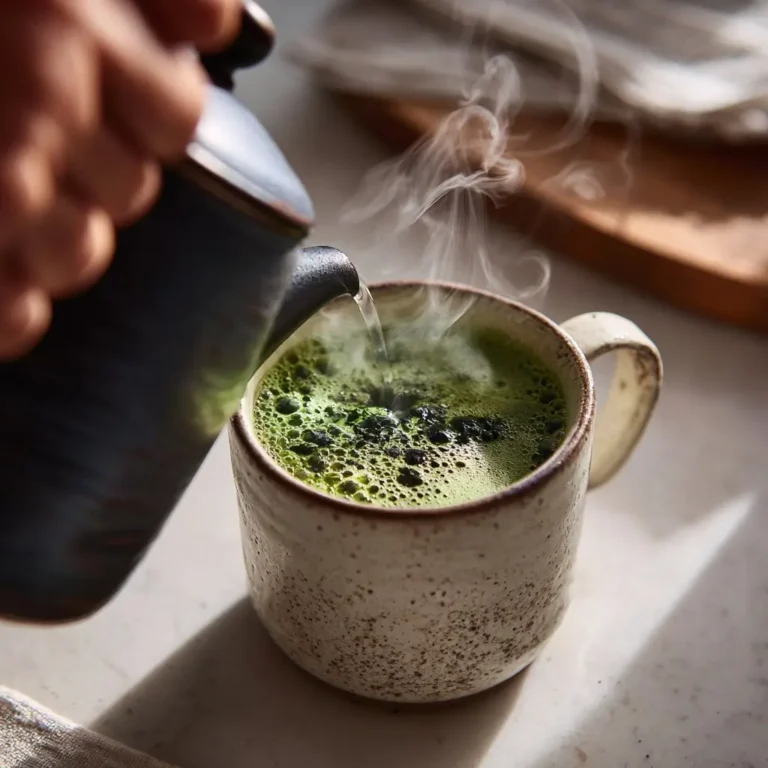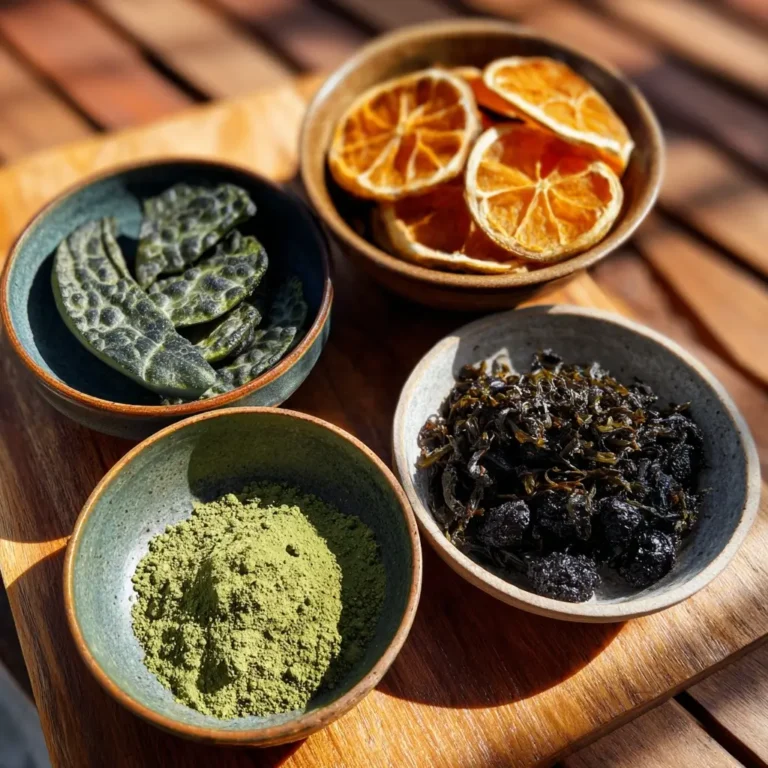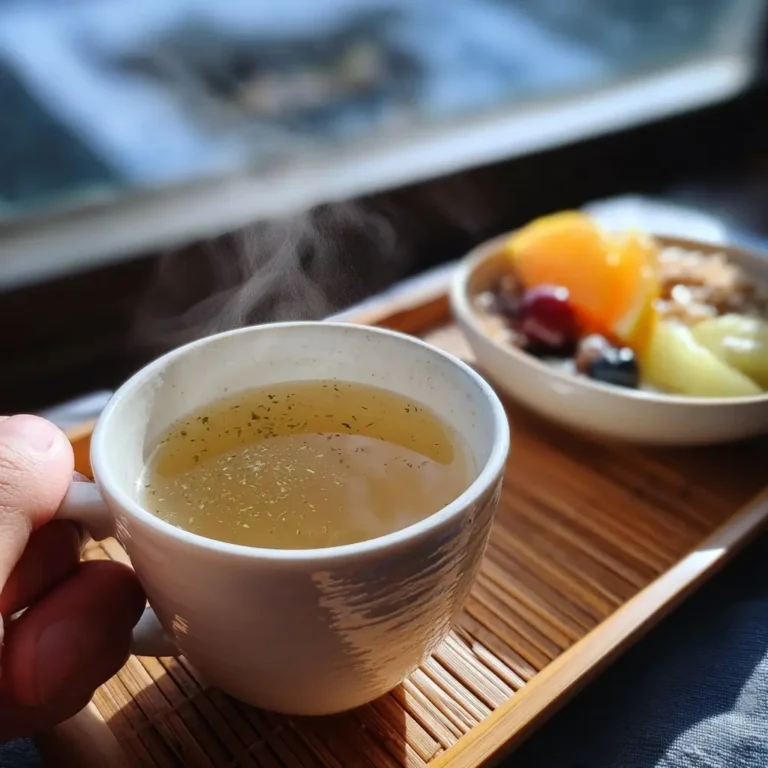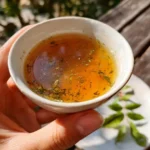I’ve always believed that the best wellness secrets are tucked away in the traditions of our elders—and when I stumbled upon the idea of the Japanese Mounjaro, it instantly reminded me of the way my grandmother used to talk about her pickled teas and herbal steeps from the backwoods of Georgia. Hi, I’m Jordan! I share healthy recipes that make clean eating simple, satisfying, and Southern-inspired. But every now and then, something new (and old) shakes up my routine—and this one did just that.
When I first heard of the Japanese Mounjaro, it sounded like a myth. A tea? A root? A diet? The curiosity took over. Turns out, it’s a powerful natural blend rooted in Japanese tradition, often referred to as a gentle and consistent weight management method. The ingredients, mostly herbs and sea-based minerals, reminded me of the slow-living Southern mindset I grew up with—nourishing yourself with purpose, not punishment.
So, I tried it. Then researched it. And now I’m here to break it down for you in a way that makes sense, whether you’re just exploring your first detox tea or already sippin’ lemon balm daily. In this article, I’ll show you what exactly the Japanese Mounjaro is, how it’s used for weight loss, the ingredients behind its success, and how it compares to popular natural remedies like the Natural Ozempic recipe. Let’s dive into what makes this trend worth a second look—and maybe a first sip.
Table of Contents
What Is the Japanese Mounjaro Used For?
A Holistic Weight Loss Support Backed by Heritage

The Japanese Mounjaro isn’t a pharmaceutical—it’s a traditional-style detox recipe that mimics some of the weight loss results seen in medications like Mounjaro, but through natural and food-based solutions. It’s most commonly found as a powdered or brewed tea drink designed to gently suppress appetite, balance blood sugar, and support metabolism.
Many of the ingredients used in the Japanese version mirror historical healing practices, blending roots, bitter melon, sea algae, and fermented herbs. These compounds are believed to help activate AMPK pathways in the body, a known switch for fat metabolism. While clinical trials don’t yet officially label it as a medical solution, countless users claim steady weight loss, reduced cravings, and more stable energy levels—especially when combined with a healthy diet.
A lot of folks ask: how does this compare to other natural hacks like the blue salt trick recipe? Well, while salt-based tricks aim to hydrate and mineralize, Japanese Mounjaro leans more into blood sugar and hormonal balance—a deeper approach with longer-term benefits.
Cultural Origins and the Modern Twist
The original concept behind this blend comes from the Japanese island of Okinawa, known for its high concentration of centenarians. Traditional meals there include kombu (seaweed), fermented soy, and teas brewed with wild herbs that gently detox the liver and support digestion.
The modern version we now refer to as the Japanese Mounjaro has been adapted for Western palettes—but it still honors its source. Recipes today, like the one you’ll find in the Japanese Mounjaro Recipe, include powdered adaptogens, citrus peel, and sometimes even powdered ginger root to stimulate thermogenesis (your body’s calorie-burning process).
It’s not a magic potion, but it is an easy and clean way to support weight loss naturally. The beauty of this approach? No restriction. No extreme fasting. Just steady support from within—something both Southern and Japanese traditions quietly agree on.
How Japanese Mounjaro Ingredients Support Weight Loss
The Key Ingredients Behind Japanese Mounjaro’s Power

When I looked deeper into what made the Japanese Mounjaro so unique, I found a pattern—every ingredient had a purpose. Each one, from the seaweed to the citrus peel, seemed to gently nudge the body toward better metabolism. Think of it like a team working behind the scenes—no drama, just steady results.
The Japanese Mounjaro Recipe typically contains a blend of ingredients like bitter melon, green tea extract, fermented black garlic, and kelp powder. These aren’t your average detox items—they’re rich in antioxidants, polyphenols, and enzymes that support insulin sensitivity and fat burning.
Bitter melon, for example, has been studied for its impact on glucose metabolism. And green tea? You’ve probably seen it in just about every metabolism-boosting product out there—and for good reason. It’s loaded with catechins that stimulate thermogenesis.
When I tested the drink myself, I noticed a subtle but consistent shift—less snacking, more energy, and no crash by midday. It reminded me of the time I tried the natural Mounjaro recipe. That version had a more earthy flavor, but the effects were surprisingly similar.
How It Compares to Other Trending Natural Detox Blends
It’s easy to think all detox blends do the same thing—but when you look closer, the Japanese Mounjaro really stands out. Let’s compare it to two others gaining traction: the coffee loophole recipe and the ginger trick recipe.
The coffee loophole is designed to curb cravings through appetite suppression—mainly by spiking metabolism with caffeine and a few fats. It’s powerful in the short term but can cause jitters in caffeine-sensitive folks.
The ginger trick, on the other hand, works through gut balance and thermogenesis. It’s great for digestion and bloat, and honestly, I still sip on a ginger brew a few times a week. But ginger’s effects tend to be quicker and more surface-level.
What makes the Japanese Mounjaro different? It focuses on the root cause—blood sugar regulation and cellular energy. It works slower but steadier, and the ingredients are gentle on the gut. It’s not a “snap and drop” weight loss hack. It’s a partner in the background, especially when paired with clean meals like my go-to banana berry protein smoothie.
How to Make Japanese Mounjaro at Home
A Simple Daily Recipe That Fits Any Routine

The first time I mixed up my own batch of Japanese Mounjaro, I didn’t expect to like it as much as I did. But the warm, slightly tangy flavor hit all the right notes—comforting like a Southern herbal tonic, but with a distinctly Asian twist. And the best part? You only need a few ingredients and a blender or kettle.
Here’s how I make it:
- 1 tsp bitter melon powder (dried slices work too, steeped)
- ½ tsp kelp powder or dried seaweed (a key mineral source)
- ½ tsp fermented black garlic extract (adds depth)
- 1 tsp green tea matcha or sencha
- 1 tsp dried citrus peel (I like yuzu or lemon)
- Optional: Pinch of cayenne or ginger for metabolism boost
Steep in hot water for 5–7 minutes if using whole dried ingredients, or blend with warm water if using powders. Drink once in the morning and again mid-afternoon for the best effect.
It reminds me a lot of the blue tonic weight loss recipe in its simplicity—no sugar, no fillers, just clean fuel. I often alternate between the two during busy weeks.
Print
What Is the Japanese Mounjaro? Natural Weight Loss with Ancient Wisdom
- Total Time: 5 minutes
- Yield: 1 serving 1x
Description
A soothing, natural detox tea inspired by Japanese traditions. Japanese Mounjaro Tea blends bitter melon, kelp, matcha, and fermented garlic to support healthy metabolism, appetite control, and daily balance.
Ingredients
1 tsp bitter melon powder
1/2 tsp kelp powder or crushed dried seaweed
1/2 tsp fermented black garlic extract
1 tsp matcha or sencha green tea
1 tsp dried citrus peel (yuzu or lemon)
Pinch of cayenne or ginger (optional)
8–10 oz hot water
Instructions
Step 1: Add all dry ingredients to a teacup or mug.
Step 2: Pour hot (not boiling) water over the blend.
Step 3: Stir gently until powders dissolve.
Step 4: Steep for 5–7 minutes if using dried herbs.
Step 5: Let cool slightly, then sip slowly.
Step 6: Repeat once or twice daily for best results.
Notes
Avoid drinking right before bedtime due to caffeine content.
You may sweeten with a drop of monk fruit or raw honey if desired.
For best effects, drink on an empty stomach or 30 minutes before meals.
- Prep Time: 5 minutes
- Cook Time: 0 minutes
- Category: Tea, Detox
- Method: Steeping
- Cuisine: Japanese
Nutrition
- Serving Size: 1 cup (8 oz)
- Calories: 10
- Sugar: 0g
- Sodium: 20mg
- Fat: 0g
- Saturated Fat: 0g
- Unsaturated Fat: 0g
- Trans Fat: 0g
- Carbohydrates: 2g
- Fiber: 1g
- Protein: 0g
- Cholesterol: 0mg
When to Take It (And When to Skip It)
Timing makes a difference with this drink. If you’re looking to support fat metabolism and reduce cravings, take it 30 minutes before meals. It preps your system to digest better and stabilizes blood sugar so you don’t get hit with energy crashes.
For example, I like to drink it before breakfast—especially if I’m having something carb-heavy like oats or fruit. It also pairs beautifully after a workout or light walk, similar to how folks use the lemon balm recipe for weight loss to calm the body post-exercise.
I don’t recommend taking it too close to bedtime—some of the ingredients (especially the green tea) can keep you a little too alert. And like all detox blends, consistency is key. It’s not a one-cup miracle, but it builds its effect day by day.
When I stayed consistent for two weeks, I noticed less water retention, improved digestion, and better portion control without trying. It felt natural—not forced. That’s why I keep it in rotation right alongside my old Southern favorites.
Is Japanese Mounjaro Safe and Effective?
What Is the Japanese Mounjaro Really Doing in Your Body?

By now, you might be wondering again: what is the Japanese Mounjaro really doing inside your body? That’s the question I asked myself when I first started using it. And after a few weeks, the results spoke clearly. This blend isn’t about aggressive fat-burning—it works by supporting the body’s natural detox and insulin balance.
The Japanese Mounjaro works with your system, not against it. It encourages stable blood sugar, better appetite control, and lower cortisol—three key factors in weight gain that often go ignored in Western diets. That’s why so many people are turning to this method as an alternative to synthetic versions.
Compared to pharmaceutical options, the Japanese Mounjaro carries no harsh side effects, no prescriptions, and no need to cycle off. It’s food-based, and when combined with a clean lifestyle and meals like this crispy bang bang salmon bowl, it becomes even more effective.
If you’re still asking what is the Japanese Mounjaro, think of it as a natural path toward hormonal balance. It doesn’t replace medications—but it supports long-term wellness without making your system reliant.
Can You Use It with Other Recipes or Programs?
Yes—and that’s part of its charm. I personally rotate it with other gentle cleansers like the pepper trick for neuropathy or my go-to apple cider vinegar for weight loss recipe. It plays well with others.
Because the ingredients are adaptogenic and mineral-rich, they fill in nutritional gaps without interfering with your usual plan. Many readers use Japanese Mounjaro alongside their intermittent fasting schedule or after a heavier Southern-style meal to ease digestion.
So what is the Japanese Mounjaro, really? It’s not just a detox—it’s a ritual. A moment of support that brings you back to balance. Whether you take it at sunrise or after a long day, it’s a small step toward feeling grounded in your body again.
FAQs About What Is the Japanese Mounjaro
What is the Japanese Mounjaro made of?
The Japanese Mounjaro is typically made from natural ingredients like bitter melon, green tea, kelp powder, fermented garlic, and citrus peel. These ingredients support blood sugar balance, detoxification, and gentle metabolism enhancement.
Is Japanese Mounjaro safe to use daily?
Yes, when prepared using food-grade natural ingredients, Japanese Mounjaro can be consumed daily. It’s considered a safe herbal supplement, especially when taken in moderate amounts. Always consult a doctor if you’re pregnant, breastfeeding, or on medications.
How does Japanese Mounjaro help with weight loss?
Japanese Mounjaro supports weight loss by helping regulate appetite, improving insulin sensitivity, and boosting metabolism naturally. Unlike harsh diet pills, it works subtly to restore balance and reduce cravings over time.
What’s the difference between Japanese Mounjaro and synthetic Mounjaro?
Synthetic Mounjaro is a prescription medication used for diabetes and weight loss. The Japanese Mounjaro is a natural alternative inspired by herbal traditions and food therapy. While it mimics some effects, it’s not a replacement for medical treatment.
Final Thoughts: What Is the Japanese Mounjaro, and Why I Keep It in My Routine
If you’re still asking yourself what is the Japanese Mounjaro, let me say this—it’s a gentle, nourishing habit rooted in real food and tradition. It’s a smart alternative for folks who want results but without the complications of prescriptions or crash diets.
I love that it’s flexible, easy to prep, and gentle enough for daily use. It fits right into my lifestyle, whether I’m sipping it with my mango pomelo sago dessert or using it to bounce back after a big Southern brunch.
And just like all good things in the kitchen, it’s best when shared. So if you’re looking for something simple, natural, and quietly powerful, now you know exactly what the Japanese Mounjaro is—and why it might become your new favorite ritual too.
For more natural detox ideas and weekly recipe inspiration, check out our Pinterest board filled with healing drinks and metabolism hacks.


